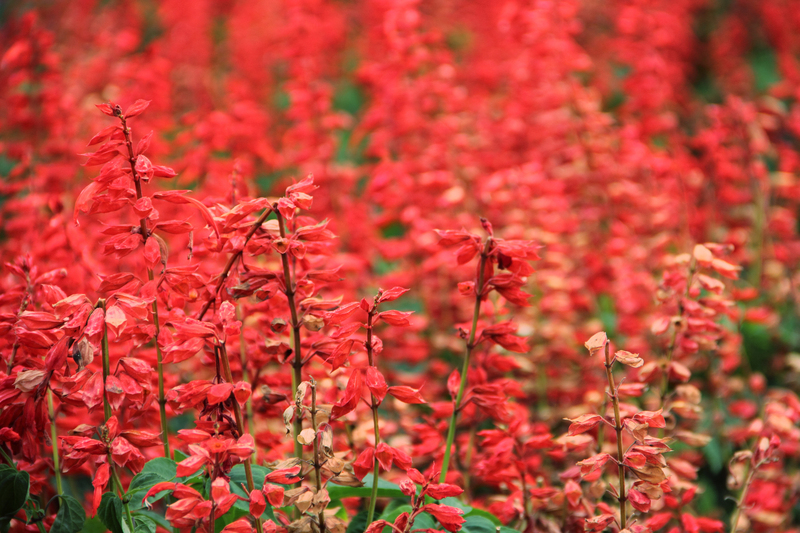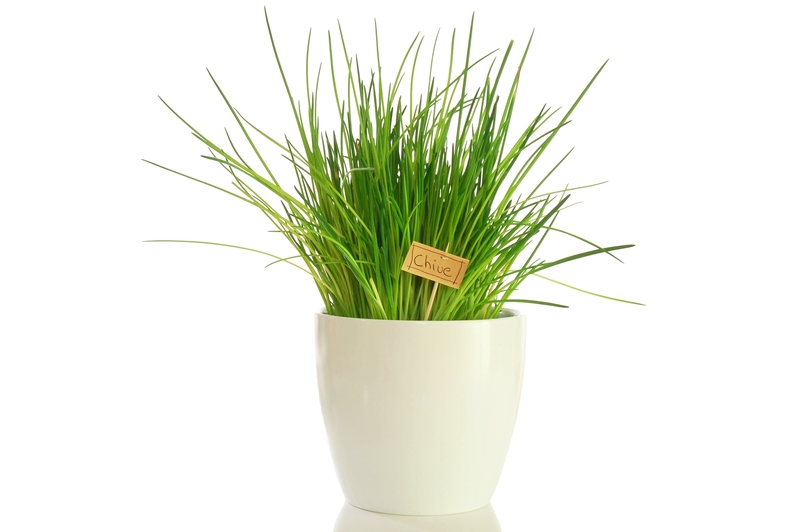Child-Friendly Landscapes: Fun Meets Safety
Posted on 05/06/2025
Child-Friendly Landscapes: Fun Meets Safety for Every Family Yard
Creating a child-friendly landscape is more than just an aesthetic choice; it's about crafting safe, inspiring, and magical environments where children can explore, play, and grow. When fun meets safety in your outdoor spaces, you're fostering both your child's physical health and creative imagination. This comprehensive guide walks you through the essentials of designing child-centric outdoor areas that balance imaginative play with thoughtful protective features, ensuring your garden or backyard becomes a haven where kids and parents can both relax and thrive.

Why You Need a Child-Friendly Landscape
Modern parents face increasing challenges raising healthy, active children. With more kids spending time indoors on screens, outdoor play has become more important than ever. The World Health Organization recommends children get at least an hour of physical activity daily, much of which can easily happen in a well-planned backyard. By intentionally designing safe play landscapes, you can:
- Increase daily activity and physical development for children
- Encourage imaginative and social play with friends or siblings
- Offer a secure environment where parents can relax and observe
- Foster an appreciation of nature and outdoor learning
Blending fun and safety in your yard means children aren't just playing--they're developing essential skills and making memories that last a lifetime.
Key Elements of Safe and Playful Family Gardens
When planning a child-centric landscape design, it's critical to balance elements of adventure with robust safety measures. Consider the following:
1. Secure Boundaries and Fences
Safety starts with clear, strong boundaries. Erect fences that are tall enough to prevent climbing and have self-closing, childproof gates. Natural barriers like hedges or dense shrubs can add extra protection while softening hard edges.
2. Non-Toxic, Allergy-Friendly Plants
Select plants that are non-toxic if ingested and unlikely to trigger allergies. Avoid thorny shrubs, spiky leaves, or plants with poisonous berries. Some favorite kid-friendly options include sunflowers, marigolds, snapdragons, and ferns.
- Research ALL plants, including bulbs and shrubs, before introducing them to play areas.
- Use mulch or grass instead of loose gravel to minimize choking hazards.
3. Soft, Impact-Absorbing Surfaces
Children stumble, tumble, and explore fearlessly--so choose ground materials that cushion falls. Options include:
- Rubber mulch
- Play-grade wood chips
- Artificial turf
- Grass (well-maintained and level)
Steer clear of concrete, rocks, or brick in main play areas to minimize risk of injury.
Planning Play Zones: Encourage Active & Imaginative Play
Segregate your yard into purposeful, child-specific zones that nurture different types of play:
Adventure and Movement Areas
Climbing structures, slides, swings, and sandboxes foster both gross motor development and adventurous spirit. When installing equipment, make sure it's age-appropriate and follows current safety standards. Provide ample clearance around swings and climbing frames, and check all hardware regularly.
- Position play equipment in shaded areas to prevent sunburn or overheating.
- Check for sharp edges, splinters, and stability.
Creative Corners: Nurture the Imagination
Create hidden "retreats" or imagination nooks with willow tunnels, teepees, or playhouses. Design quiet areas with children's benches, logs, or boulders where they can read, dream, or play make-believe games.
Nature Exploration Zones
Dedicating a section of your landscape to natural play--such as sensory gardens, mud kitchens, and bug habitats--encourages curiosity and learning. Let kids plant flowers or veggies, install a butterfly house, or create a water feature like a bubbling fountain (with very shallow, supervised water only).
- Never leave standing water in unsupervised areas.
- Introduce non-toxic, native plants to support local insects and birds.
Choosing the Right Materials: Safety Meets Style
Durable, easy-to-clean, and non-toxic materials are your best friends when designing a child-safe landscape. Some ideas include:
- Wood: Make sure it's sanded smooth, untreated with chemicals, and rot-resistant (think cedar or redwood).
- Plastic: UV-stabilized plastics can be excellent for slides, swing seats, and playhouses, but avoid low-quality plastics that crack or leach chemicals.
- Natural stone: Use only in non-play areas or well-embedded as stepping stones.
For surfacing, favor impact-reducing materials (see above). Avoid hazardous decorative items like glass mulch, sharp edging, or stepping stones that could wobble underfoot.
Smart Landscape Design for Safety and Supervision
An effective family-friendly garden is as practical for adults as it is enchanting for kids. Here are key design principles that bring fun and protection together:
Clever Sightlines
Keep major play zones in full view from the house, patio, or main outdoor seating area. Trimming shrubs and smartly placing play structures ensure you can supervise without hovering.
Accessible Paths and Walkways
Use wide, flat, non-slip pathways between activity zones, shedding water easily and reducing trip hazards for little feet.
Good Lighting
Install soft, even landscape lighting for early evenings, which helps avoid accidents and extends safe outdoor fun.
Sun Protection and Shade Structures
Mix mature trees, pergolas, and sail shades to protect play areas from harsh midday rays.
Practical Storage Solutions
Incorporate ample storage for toys, bikes, balls, and garden tools, teaching kids to tidy up while reducing trip hazards. Durable bins or built-in benches with hidden compartments work well.
Water Safety in Child-Friendly Gardens
Children are often drawn to water, but even shallow pools, ponds, and fountains can pose significant risks. For water features in kid-friendly landscapes:
- Always supervise when children are near water.
- Fence or cover ponds and pools.
- Use recirculating fountains with low water depth and ensure they're inaccessible when unsupervised.
Integrating Learning and Nature: The Outdoor Classroom
Modern child-friendly gardens can do more than entertain--they're perfect places for hands-on learning. Designate a "garden classroom" for:
- Growing a vegetable patch or pollinator garden
- Exploring composting and sustainability
- Observing local wildlife and insects
- Outdoor art projects
This not only builds skills but also helps children gain an appreciation for environmental stewardship.
Eco-Friendly Practices for Sustainable Child-Safe Landscapes
Protect your kids and the planet with these tips:
- Avoid chemical pesticides and fertilizers--instead, use organic soil amendments and pest control.
- Practice water conservation by installing rain barrels or drought-tolerant plantings.
- Design for wildlife by including bird baths, bee houses, or native flora.
Eco-friendly, sustainable landscapes give your children a cleaner, healthier space to play and grow.
Age-Appropriate Landscape Ideas: Growing with Your Child
A truly child-adaptable landscape evolves with your family. Here's how to tailor your design to children of different ages:
Toddlers (Ages 1-3):
- Flat, fenced lawns with soft mulch or rubber matting
- Messy play stations like sandpits or water tables
- Low, easy-access slides and stable ride-on toys
Preschoolers (Ages 4-6):
- Mini gardens for digging and planting
- Age-appropriate climbing frames and swings
- Creative art/water stations or mud kitchens
School-Aged Children (Ages 7-12):
- Treehouses or forts for imaginative play
- Sports goals, hopscotch, or bike paths
- Pump tracks or zip lines (with adult approval and safety gear!)
Teens:
- Hammock retreats, outdoor gaming or movie zones
- Vegetable gardens and barbecue spaces with seating for friends
The best child-proof landscape adapts gracefully as your kids grow, involving them in updates and gardening projects.
Common Mistakes to Avoid in Child-Safe Landscape Design
- Neglecting plant research: Many ornamental plants are toxic. Always cross-reference before planting!
- Using decorative stones, gravel, or mulch that pose a choking hazard for toddlers.
- Ignoring sun exposure: Play zones located in full sun risk overheating and sunburn.
- Complicating supervision: Tall shrubs or hidden corners can block sightlines.
- Choosing complex, hard-to-maintain play equipment that quickly degrades and becomes unsafe.
Getting Kids Involved in Landscape Design
One of the best ways to ensure that your family garden truly resonates? Involve your kids! Let them choose colors, plants, or the location of sandboxes and art corners.
- Assign small tasks like filling birdbaths, planting seeds, or painting pots.
- Let them personalize areas with signs, stepping stones, or painted rocks.
When kids help design their play garden, they're invested in caring for it and respecting its rules.

Low-Maintenance, Year-Round Fun
For busy families, choose low-maintenance features and plants. Drought-tolerant lawns, native shrubs, drip irrigation, and easy-clean play surfaces cut down your workload so you can focus on enjoying the outdoors together.
Conclusion: The Lasting Benefits of Child-Friendly Landscapes
Blending fun and safety in your landscape design does more than protect your children--it unlocks a lifetime of discovery, play, and togetherness. With thoughtful planning, imaginative features, and robust safety protocols, your kid-friendly backyard or garden becomes a cherished space for family bonding, laughter, and growth. Whether you're redesigning a small urban yard or sprawling estate, safe outdoor spaces empower your children to shine today--and for many seasons to come.
Ready to turn your yard into a child-proof paradise? Start by assessing your current space, brainstorming with your family, and implementing even a few of these tips. The rewards of a fun, safe landscape for kids will last for years--and make plenty of extraordinary memories along the way.

